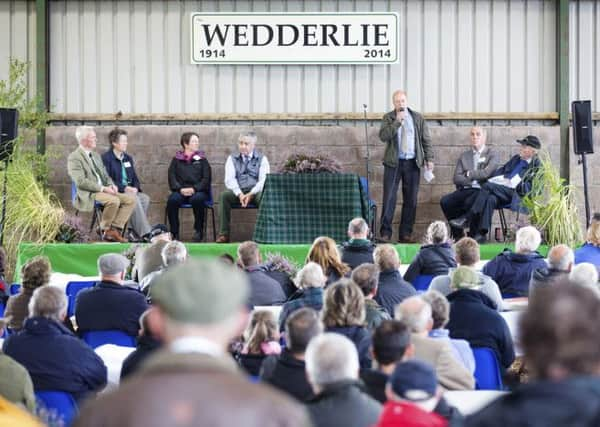Beef producers urged to use latest technology


Part of the £45 million fund earmarked by the Scottish Government for beef improvement over the next three years should be used to develop genetic programmes to help commercial beef producers become more efficient, Mr Miller told more than 1,000 beef farmers attending the centenary open day of the Wedderlie Aberdeen-Angus herd at Gordon.
He praised owners, John and Marion Tilson, and daughter, Wanda Hobbs, for their good use of estimated breeding values (EBVs) to improve the performance of their 200-cow herd, one of the best in the country.
Advertisement
Hide AdAdvertisement
Hide Ad“The Wedderlie herd is showing the way by incorporating all available technology into their breeding programme, with an emphasis on maternal EBVs, to produce commercial cattle for the commercial market,” said Mr Miller. “They have demonstrated how top quality cattle can be produced on grass on a high lying hill farm presenting many challenges.”
But Mr Miller said Scotland was falling behind Ireland where EU money is financing an ambitious data capture programme, including carcase information and eating quality, to help producers select breeding stock, and also a performance testing programme to assess the commercial progeny of selected sires.
Contrary to popular belief, research in Ireland indicates bulls showing the highest liveweight gains were not necessarily the most efficient in converting feed into beef, he said.
Reducing feed costs – the benefit could be as much as 7kg per head per day - would be a major bonus for the industry. And identifying the genetics of cattle producing a higher proportion of the best cuts in a carcase, rather than just huge rumps and mince, could be worth as much as £200 in carcase value, he said.
Advertisement
Hide AdAdvertisement
Hide AdRoslin Institute research shows progeny of some sires had a higher resistance to TB than others, and the same might apply to Johne’s diseases, which offered tremendous potential advantages to beef producers.
SRUC beef expert, Dr Basil Lowman, warned attendees the continued emphasis on liveweight gain in all breeds could lead to the breeding of “elephants” in the future. The Aberdeen-Angus had made tremendous progress in increasing average 400-day weights by 20kg over the past 10 years but indications suggested it was at the cost of calving ease.
“The aim must be to get cattle to grow as fast as possible up to 400 days and then stop, The breed should be looking to select females with a big pelvis for easy calving rather than concentrating on a further increase in growth rates,” he said.
The Wedderlie herd meanwhile has increased growth rates above the breed average while improving calving ease and increasing 200-day milk weight at double the breed average by concentrating on maternal EBVs when choosing females for breeding.